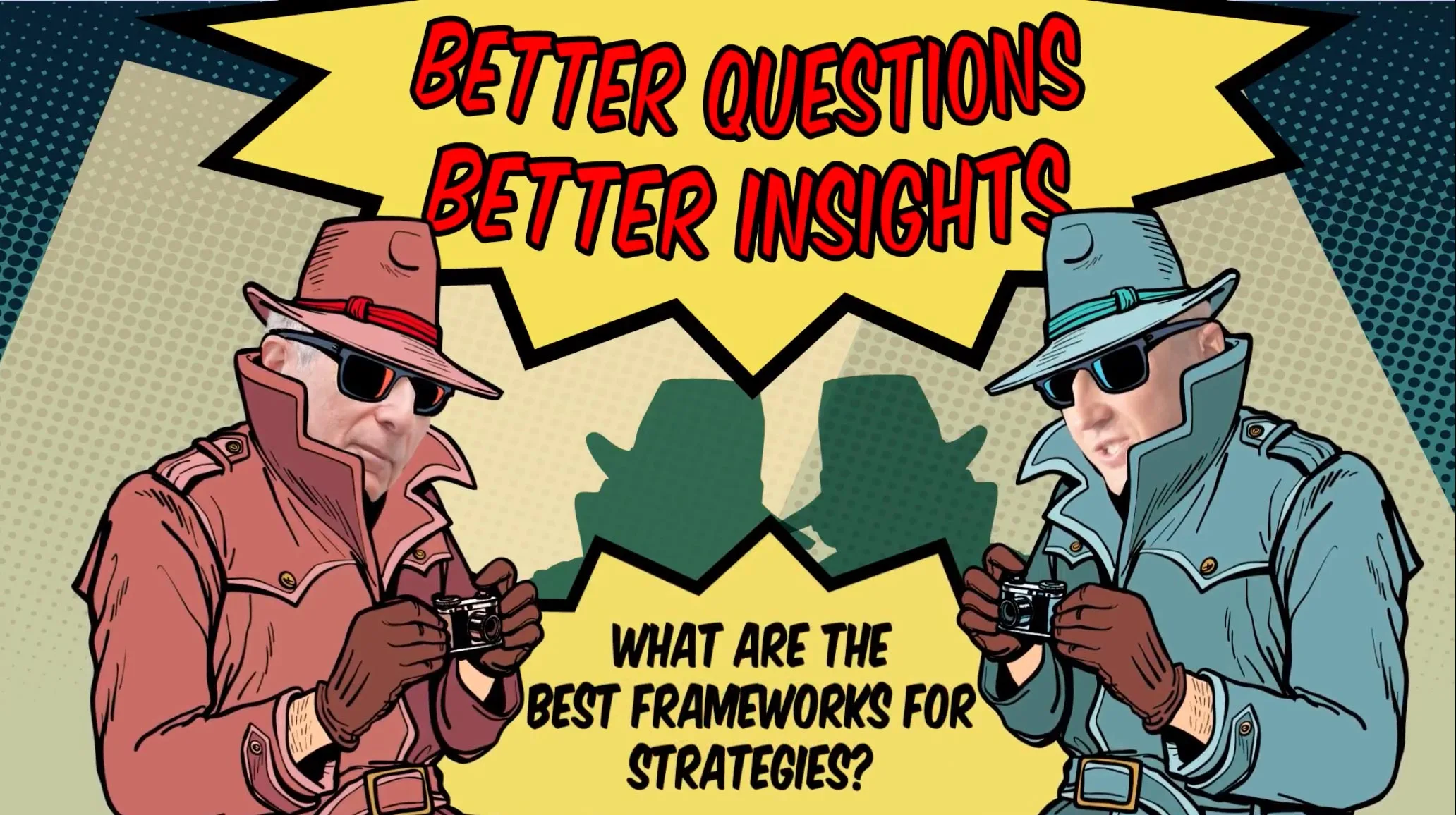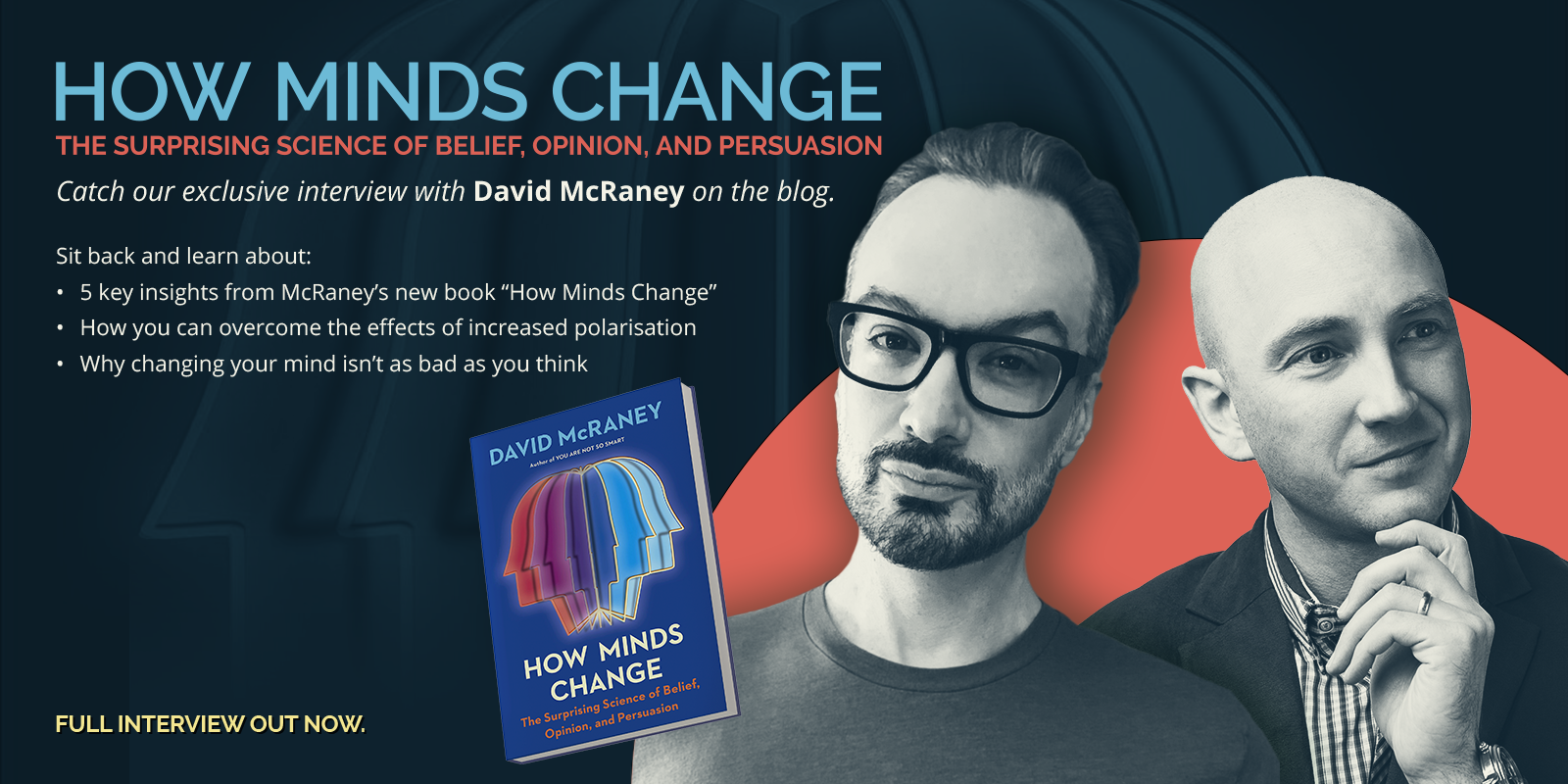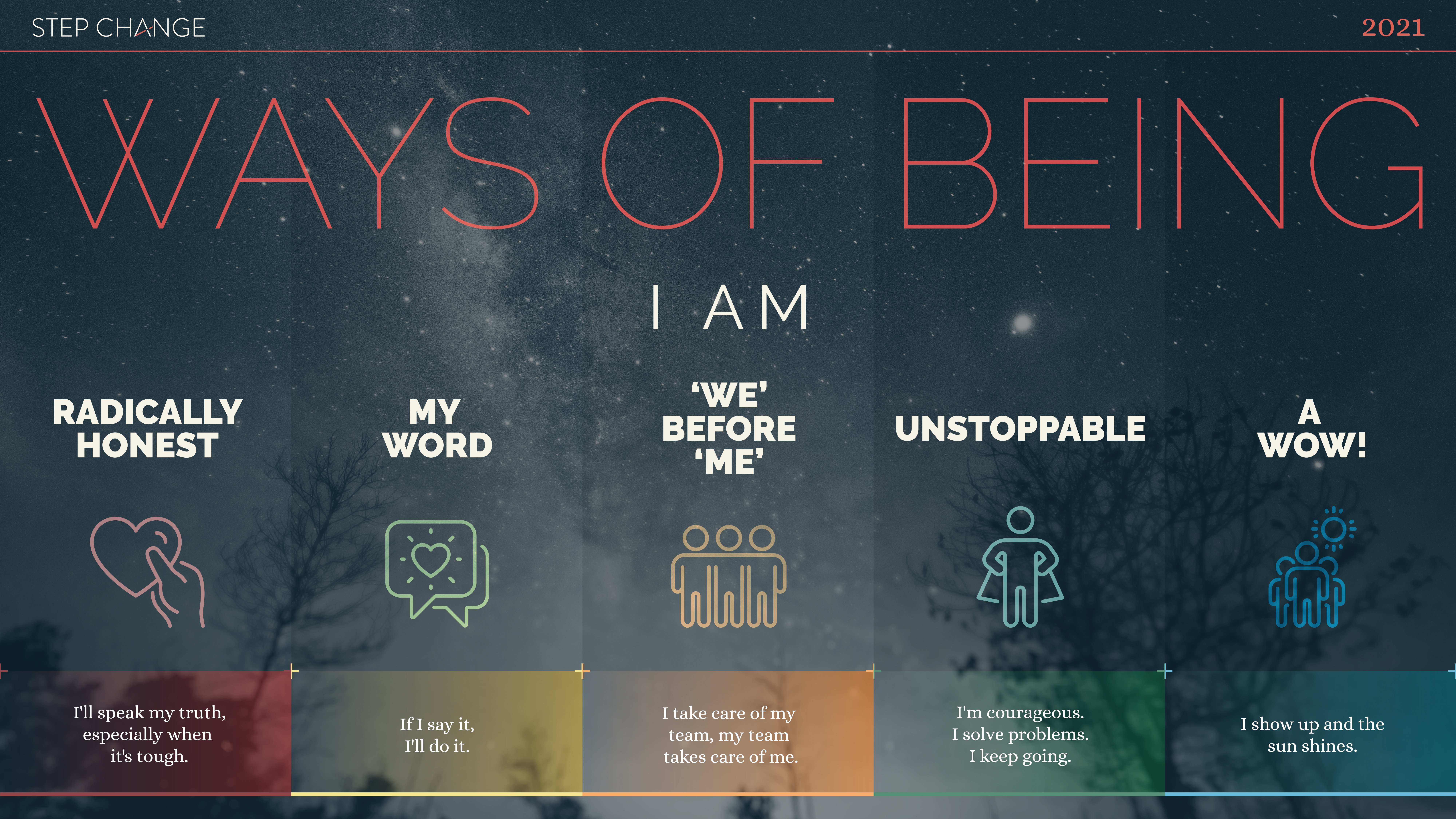This is the first post of eight in the History's Greatest Strategists Reminder Series, Assembling Your Ultimate Business Advisory Board, by Ashton Bishop, CEO at Step Change.
This is the follow-up series to a keynote and workshop that covers the foundations for building great strategy. As all strategy depends on the context, we start by looking at one of the most important questions, 'who has your money?'
This series was designed to provide some new inspiration, recap key thoughts and keep the ideas you have top-of-mind in helping you achieve growth and sustain change.
Who's got your money?
Today we're going to have a look at 'who's got your money?' This is the first question that really helps us find out what should be on your strategic radar.

Our aim is to help you identify who's really got your money and the best strategy to get it back. We'll share examples of how some of the big boys like Pepsi, Coke, McDonalds and Apple can get it so right and also so wrong.
So the question, who's got your money? What does that mean?

It means we've got a choice in business and there's only a few strategies we can really have if we're only interested in growth.
- We can look to grow our market by bringing additional people to our category
- We can look to take brand share - so we can look to another company and ask, "Should we have some of their customers?"
- We can look to drive frequency to get our customers to buy more
- We can drive up the sales value which is about up-selling, cross-selling or driving our margin.
Essentially there's only four main ways that I know that you should be looking to grow your business. Why does this matter? Generally, the market leader should grow the market, particularly if the market is fragmented or if category penetration is low.
For example, in financial services, with market penetration only being about 20%, most financial advisors need to be growing the market versus taking brand share. If you have a large competitor or a very slow, sluggish and out of touch competitor, then taking share is the best strategy.
And finally, customer first. If you haven't optimised your existing customer base then that's the place to start.
Binary Analysis
There's an article by Dave Trott called The Fundamental Law of Selling. In this article Dave covers Binary Analysis which is related to this thinking so I'd like to share it with you.
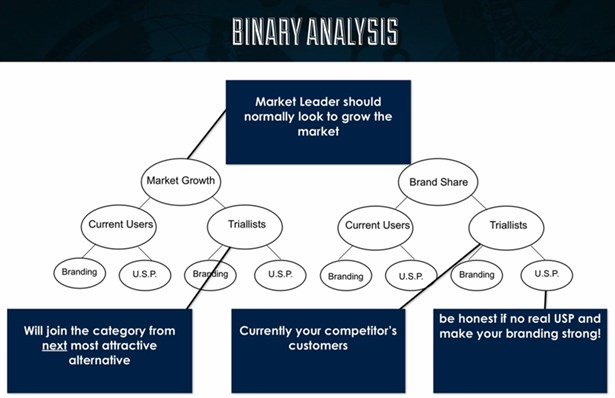
Binary Analysis looks at a marketplace and says you're either taking market growth or driving brand share. And then there's a choice. You can either go to your current users or you can go to triallists, people who are trialling your product or category. Then you can either talk about a branding message - "Buy Us", or USP - "Buy Us because of X".
A market leader should generally look to grow the market. In the circumstance above, the triallists are people who will join the category from the next most attractive alternative. Start to think about this as the opportunity costs for people who are outside of that current category. Try to understand the barriers that are keeping them from your category. Is it just awareness or is it something else?
So if I'm trying to grow the market for public transport, Ill probably want people to join who currently own cars or people who are driving motorbikes or riding pushbikes.
And here triallists, when we talk about brand share, are currently your competitor's customers. The most important thing around USPs or Unique Selling Propositions is to be honest about it. If its a UPS then it should really be unique AND should have selling value. The both need to be present for it to be a true USP.
A lot of people look at unique propositions or just selling propositions (with no real uniqueness) and pretend they are unique selling propositions. If you don't have one then you just go for branding and make sure the customers don't miss the fact that it's your brand.
The Cola Wars

In his article, Dave looks at cola wars which is really a cool way to explain this concept. He looks at Coke versus Pepsi. So, in the cola category Coke started the market.
They were growing the market, they were looking at triallists because nobody else was in the category and they were looking at branding. They went open Coca-Cola and summer pops out of the lid (yes, Open Happiness has been around for a long time now). And Coke grew the market and of course owned 100% share.
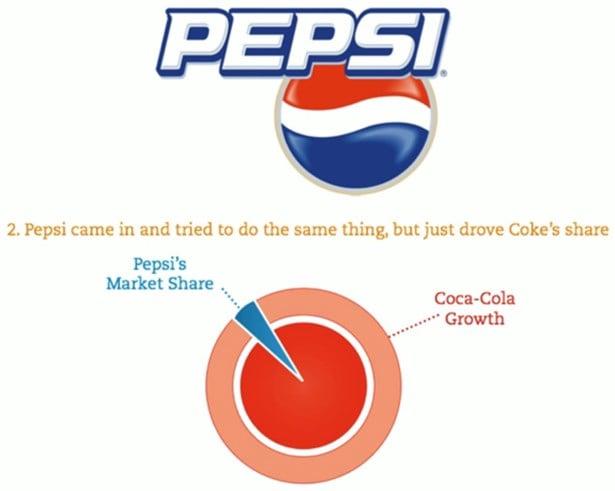
Then Pepsi came along and they started to sell cola too. They went, "Hey, cola's great, you should drink it". Drink Pepsi cola. And everyone went, "cola IS great" and they drank Coca-Cola. Pepsi was really great at driving Coke's market share.
Over time of course, Pepsi did take some market share and Coke started worrying about this. Coke tried to fight back so they're going out marketing like, "It's the real thing, drink Coca-Cola", but they were really just fighting against Pepsi and the market share was too small to be really effective. Coke didn't have an effective strategy. They should have been growing the market instead of working on brand share.
Pepsi then finally got smart. They knew that Coke had a much bigger share and they should focus on taking that. So Pepsi was after brand share, triallists (being Coke's customers) and then for the first time in the cola category they had a USP, their Unique Selling proposition - 3 out of 4 people in blind taste tests prefer Pepsi. BAM!
Their market share grew past 50% and Pepsi passed Coke in the United States (for the first time and the only time ever).
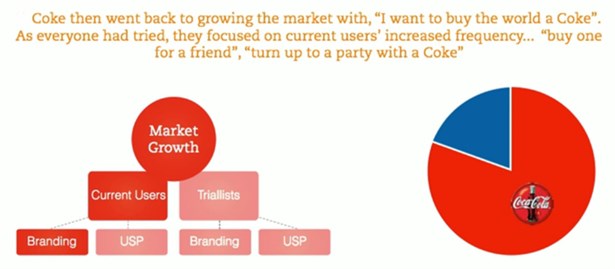
Coke then got smart themselves. With people already having tried Coke, they needed to go to 'frequency', getting current users to use more. So they went 'market growth', 'current users', 'branding'. They did this wonderful ad, by McCann Erickson, of children of the world standing on the side of a mountain singing, 'I want to buy the World a Coke'.
The message being, when you go to a party or an event, bring a Coke for you, bring a Coke for a friend. It was highly effective and saw Coke grow to be one of the most valuable brands in the world.
Different Strategies for Different Occasions

It's different strategies for different occasions. If we look at Apple for example, in the PC market they used, 'I'm a Mac, I'm a PC', then iPod for portable music where they lead, you see a very different style of advertising.
One's about market growth, the other one's about brand share.

Brands get it wrong all the time. In fact McDonalds, a very successful marketer of hamburgers released a chicken burger and the chicken burger came out in marketing saying, "Hey, you'd love a chicken burger wouldn't you?" What happened? Well, KFC sales went through the roof.
We had some insight into the media side at the time and we saw what happened. So even the biggest brands get this wrong. The important thing is to ask, who's got your money? then what's the best strategy to get it back.
In our next post we will bring you the next instalment in the History's Greatest Strategists Reminder Series.
Check out the full presentation below.






